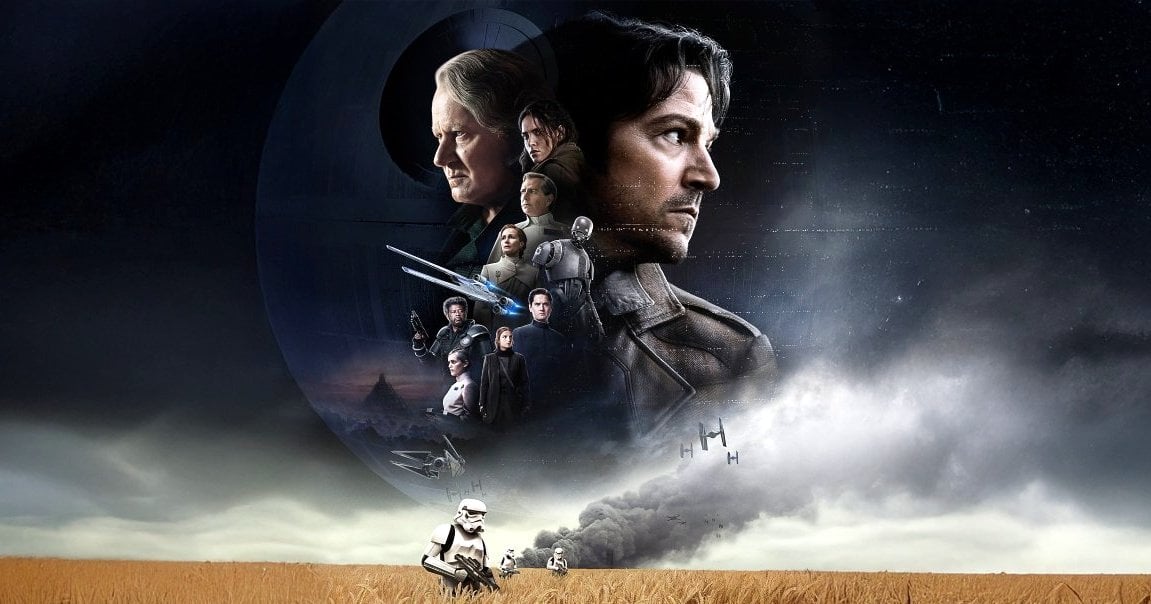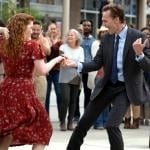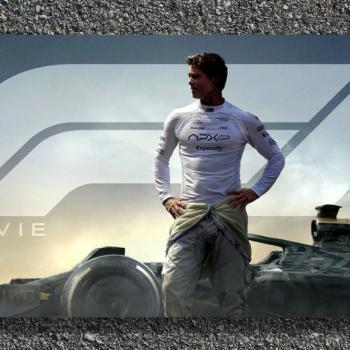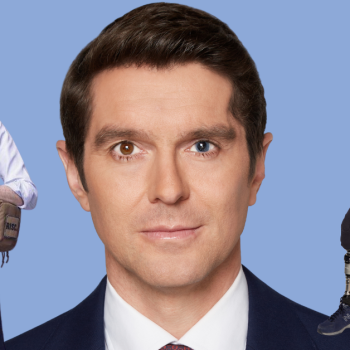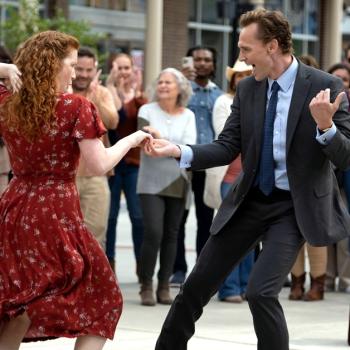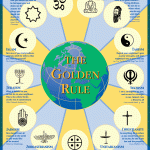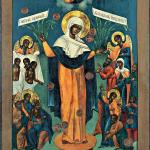I’ve spent the past week rewatching both seasons of Andor, then Rogue One, then Star Wars (I refuse to call it anything but just Star Wars … and #HanShotFirst).
They’re three projects, three genres, three audiences — but only one story. The difference is all in the telling.
(What lies below, while not entirely spoiler-free, is spoiler-lite.)
Don’t miss a thing: Subscribe to all that I write at Authory.com/KateOHare.
For the Uninitiated
The three projects were made and released in reverse order, with 39 years from the 1977 first movie to the film Rogue One: A Star Wars Story in 2016.
(I’m not counting any of the tinkering and re-releasing of Star Wars, because the “improvements” aren’t worth discussing … oh, and #HanShotFirst.)
In the intervening years, Lucasfilm was absorbed into the Disney Borg, and a number of unfortunate things resulted. In my opinion, Rogue One is the only Disney Star Wars live-action film worth watching, but your results may vary.
Of the other Disney+ live-action TV series, the less said the better. But, The Mandalorian was fun, mostly for Baby Yoda, a k a Grogu, and that Pedro Pascal generally kept his helmet on. But that’s a different conversation.
It was then another six years until the first season of Andor on Disney+ in 2022, then three more years until Andor season 2 in 2025.
Andor is a science-fiction TV drama. Rogue One, despite having been released in theaters, is essentially a high-budget premium-cable movie. Star Wars is a feature film. Each is a good, or even great, example of its genre.
To follow the story in order, watch Andor, Rogue One and then Star Wars. The storyline of each follows directly upon its prequel. It’s an impressive bit of reverse invention and retconning (short for retroactive continuity).
Does it mesh perfectly?
No, not really, not exactly, not as such. But, close enough.
What ties them all together?
The connective tissue from Rogue One to Andor is Oscar- and Emmy-nominated writer/producer Tony Gilroy, who would have been 19 when Star Wars came out. So, he experienced the original version while already a young adult.
I think that matters. He saw Star Wars and the first two sequels — which cemented the franchise — with adult eyes, and maybe that figured in to his later work.
From George Lucas to Tony Gilroy
Most of my career writing about entertainment has focused on TV, and I’m far more a TV baby than a movie buff.
Too often, it seems that TV is seen as a lesser thing than movies. And these days, many TV shows adapted from existing IP (looking at you Lord of the Rings: The Rings of Power and The Mandalorian) are more movies cut into one-hour chunks than properly constructed TV dramas.
Back in 1992, I did an interview with George Lucas on the occasion of the premiere of The Young Indiana Jones Chronicles, his own ABC prequel to the Indiana Jones films. Not only was it a very entertaining show, it was proper TV.
And Lucas knew the difference.
He said,
Both [TV and features] are storytelling. Both are using cinema as a means of communication. There are certain requirements in television that aren’t as demanding, or are more demanding, than features.
Features are like a novel, whereas television is more like doing a sonnet. It’s hard to say which is more difficult to do.
They’re just different mediums, and in some cases, I’ve been fortunate in that I’ve been fairly left alone to do what I want to do.
He had a bunch more to say, including about Star Wars and Wookiees, but that’s for another post.
Doing Proper TV
Although the vast bulk of Gilroy’s work has been in features, he understands some essential things about TV. Even if it’s big-budget (and Andor was), with lots of effects, good TV drama is always character-based. After all, you could potentially share your living room with these people for years on end.
It’s not about huge stunts and sweeping vistas. You can get those on occasion, but it always comes back to the face on the screen, and characters whose personalities become as familiar to viewers as friends and family.
Also, no matter whether you’re dealing with purely episodic TV or serialized stories, each episode should have an internal arc. That means a beginning, middle and end, plus an overall theme, while still propelling the main story forward.
These make each episode compelling in and of itself, while still contributing to the whole.
Andor does that.
What It Is, and Who It’s For: Star Wars
Working in release order, Star Wars is space opera, maybe science fantasy at a push, in that it doesn’t really care about science or accurately predicting human cultural and technological progress. Announcing up front that it’s “long ago in a galaxy far, far away” dispenses with that notion immediately.
It’s a fairy tale, complete with a farmboy, a princess, a lovable rogue, and amusing sidekicks. As such, it’s for a broad family audience.
There’s violence, but not too graphic; a whiff of romance, but not too much; and a frisson of danger with a happy ending — although, in retrospect, Luke Skywalker’s airy dismissal of R2D2’s severe damage after the explosion of the Death Star seems a bit callous.
By the way, the rebel attack on the Death Star is actually called, in Star Wars lore, the Battle of Yavin (the planet Yavin being the rebel HQ and the Death Star’s target). Victory was made possible by the rebels’ analysis of stolen schematics for the moon-sized weapon, revealing a small but fatal flaw.
Upon that, all the rest is built.
Oh, and a belated Happy Star Wars Day — May the Fourth Be With You!
What It Is, and Who It’s For: Rogue One: A Star Wars Story
This film supplies the backstory for that fatal flaw. I won’t spoil the plot details for you, but suffice to say it’s a fun ride. A bit darker than Star Wars but very similar in tone, it even reused footage from the original film in a battle scene.
Also, the Star Wars character Grand Moff Tarkin is there, with 3D CGI recreating the face of the late actor Peter Cushing, based on a life mask taken of him for the 1984 film Top Secret! (Is it creepy? Yeah, a bit.)
Rogue One introduced the character of rebel-intelligence agent Captain Cassian Andor (Mexican actor/director/producer Diego Luna), who, for reasons that become obvious in watching the movie, is not mentioned in Star Wars.
As a fan of Star Wars, it was great to be back in that world, where so many of us have lived in our heads and in various kinds of media since 1977.
It’s not the slick, Jedi-heavy world of the big-screen Star Wars prequel trilogy, but the rough, scuffed, grimy universe of the first Star Wars trilogy (even if Return of the Jedi did wind up in the woods with the Teddy Bears’ picnic, but I’ll address that when I get back to my Lucas interview).
But, unlike family-suitable Star Wars, this film got a PG-13 rating. for sci-fi violence and intense action. It’s the exact middle ground of the trio.
What It Is, and Who It’s For: Andor
There’s a lot I could say about Andor, but much of it would be spoilers, and I’d really like you watch all 24 episodes with a clear mind.
But I will say this, Andor is not for kids, or probably even younger teens. It’s set in the Star Wars universe, starting about five years before the Battle of Yavin, but it’s a serious character study and political drama.
As the title indicates, it’s the story of Cassian Andor (and Luna is an executive producer), and how he went from an orphan to a thief to part of the rebellion against the Empire.
It’s much slower-paced than the other two, and meticulously plotted and shot. There are scenes and details in early episodes which are paid off — much later. Like the best of serialized dramas, it rewards patience and close attention.
I might have wished that some individual episodes had a bit more closure, but that’s more a quibble than a real problem.
The Politics of Andor
Andor also does what the best science fiction does well: take modern and historical human problems, and filter them through a different time and place.
There’s a definite political stance in Andor: freedom is natural in the human (or, in this case, also alien) heart, and it seeks to defeat faceless, mechanistic tyranny. But that’s one of the core ideas of Star Wars anyway.
There are instances in Andor which call to mind conflicts and atrocities both from history and the headlines. But, the series manages to echo without direct imitation, and leaves it up to the viewer to put events in his or her own context.
What Andor doesn’t do is rely on superhuman Jedi abilities and a mastery of the Force — a quasi-religious concept wrecked in the big-screen prequels by being reduced to particles in the blood (if I never heard about midichlorians again, it would be too soon).
The Force does get a mention in Andor, but it’s back to being a more general metaphysical concept, and that’s a relief.
Andor is Star Wars, but it’s Star Wars just for grownups. It digs into the gritty reality behind rebellions, and what they ultimately cost for all involved. While obviously being on the side of the rebels, it’s not without sympathy for those Imperial true believers who wind up being disillusioned or worse.
Mon Mothma
There is one nugget, though, that may come in handy to putting Andor in context. Imperial Senator Mon Mothma plays a big part in the series. You may remember her from The Return of the Jedi, where she announces the heavy cost for information on the rebuilt Death Star’s location (not the one destroyed in the first movie).
Originally played by Caroline Blakiston, Mothma is now beautifully portrayed by Genevieve O’Reilly.
In Conclusion
Watching the three together is not only entertaining, but especially for showbiz folks, an exercise in defining genres, understanding audiences, and the way both of those allow you to tell the same story in different ways.
Some original Star Wars fans, especially those who came in as kids, could find Andor too slow and serious. People introduced to the Star Wars universe by Rogue One or Andor could find the feature films a bit facile and simplistic.
It also behooves the audience to understand what something is, and who it was made for. Often, disliking something comes from it not living up to an expectation that the thing was going to be something entirely other from what it was designed to be.
For example, if you go to Top Gun: Maverick expecting an introspective indie film or Shakespearean drama, no amount of whizbang aerobatics is going to make you happy.
And One More Thing
This is a side thought I had while watching: the main difference between science fiction and fantasy is that science fiction bears the burdens of logic and plausibility, even if both strain our current understandings of biology and physics.
By that measure, even Andor still has fantasy elements. That’s because Star Wars planets appear to have similar gravity and atmospheres, suitable for humans and a whole assortment of generally bipedal aliens — with no attempt to explain any of this in scientific terms.
Also, each Star Wars planet is shown to have one culture, one climate, and one language. That’s not even true across continents on Earth, let alone a whole planet.
In the end, the planets of Star Wars are essentially just different countries, and its galaxy is one world, spread out across many.
You can dispute me on it, but that’s how it seems to me.
But there’s always fandom to fill in the blanks:
Image: Disney+
Don’t miss a thing: Subscribe to all that I write at Authory.com/KateOHare.


